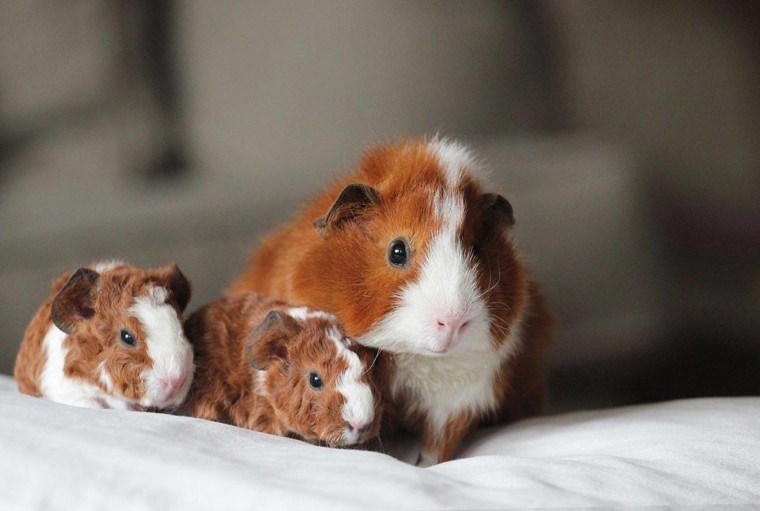
Guinea pigs are one of the most prevalent rodent pets in the United States. Many people consider them cuter than mice and rats, which often leads to an uptick in their popularity.
However, they do require similar care to other rodents. For instance, their teeth continuously grow, so they will need to be worn down constantly. They also require a similar diet.
Despite their popularity, there are many things about this animal that the average public doesn’t know. In this article, we’ll take a look at some of these fascinating facts about the guinea pig.
The 21 Guinea Pig Facts
1. They Don’t Exist in the Wild
Guinea pigs were wild – once. Due to hundreds of years of domestication, they have developed into a unique, captive species. They do not exist in the wild, though a close relative of them does, mainly other cavy species that were not domesticated.
But you aren’t going to walk around in South America and come across a guinea pig.

2. Guinea Pigs Were Originally Kept as Livestock
Initially, these rodents were kept as livestock. They were eaten and still are in some areas today. They’re a bit like chickens in this regard.
In the west, they are primarily kept as pets, though. They have enjoyed popularity as pets since the 16th century when they were imported into Europe and North America. By this time, they had already existed extensively in captivity.
Therefore, they were already set in stone as a species and distinguished from their wild counterparts. They also come in a few different appearances – with long-haired pigs as one variety.
3. They Were Used Heavily as Science Test Subjects
There is a reason human test subjects are sometimes referred to as “guinea pigs.”
In the 17th century, these rodents had increased substantially in popularity throughout the Western world. Therefore, some scientists began using them for experiments. Mice were still used at the time, but guinea pigs were another standard option.
Their popularity in the science field quickly picked up around the 19th and 20th centuries. During this time, they were the experiment animal throughout much of the world.
Since then, this species has been replaced mainly by mice and rats. They are still used in research for some conditions, though. For instance, they are one of the few animals needing vitamin C like humans, making them good candidates for scurvy tests.

4. They Aren’t Related to Pigs
Not only are guinea pigs not related to pigs, no one exactly knows where their name comes from!
This species is a rodent – not a pig. Thus, we don’t know where the name came from or why it stuck.
It may be related to their use as livestock in South America. They are the pigs of Guinea in that sense. However, we will likely never know for sure where the name came from.
5. Guinea Pigs Don’t Sweat
Guinea pigs do not sweat. This is common across many different animal species. We humans are the weird ones that sweat.
Guinea pigs don’t have the sweat glands across their skin as people do. Therefore, they can’t sweat.
Dogs and cats actually can’t sweat either. That’s why they often pant instead!
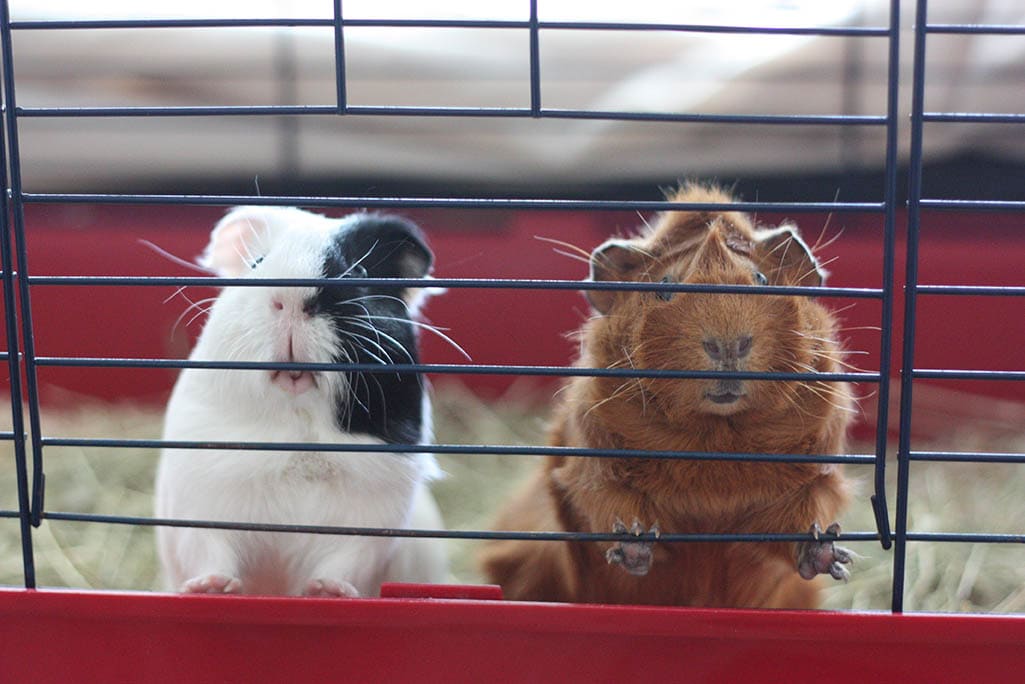
6. Guinea Pigs “Popcorn” When They Are Excited
When guinea pigs experience excitement, they may make a slight jumping movement. Because they aren’t exactly made to jump very high, this movement is very slight. In some cases, it may just look like they’re shaking up and down.
Sometimes, this behavior makes pet parents a bit worried – especially if they’re new to guinea pig ownership. It can look like something is wrong with your pet if you don’t know what’s going on.
However, it is entirely normal.
Usually, guinea pigs exhibit this behavior when they are receiving their favorite snack. Some will also get excited when their cage is opened, especially if they enjoy playtime and the extra attention. Some may even get excited when their owners walk into the room.
7. Their Teeth Never Stop Growing
Guinea pigs have endlessly growing teeth like most rodents. In the wild, their teeth would get naturally worn down through the grasses they eat. So, their teeth have to grow, or they would end up without any teeth at all!
However, guinea pigs often eat pellets and softer foods in captivity. Their teeth don’t always get worn down like they are supposed to. Sometimes, they can become overgrown and begin to damage their mouth. This is a no-go.
You can control their teeth growth through the proper diet. Hay is often recommended as a large portion of their diet for this reason. It wears its teeth down naturally, just like it would in the wild.
But sometimes, veterinary care is still required to keep their teeth at an appropriate length. Vets can shave down their teeth safely in an office.
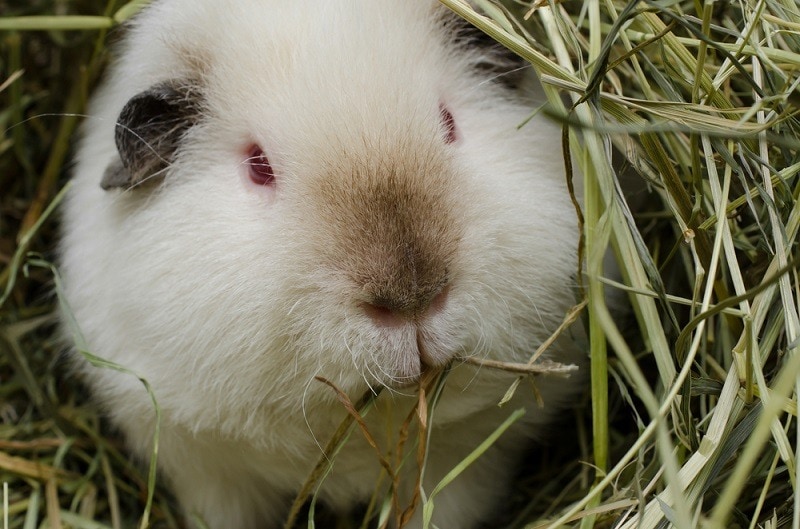
8. Guinea Pigs Are Quite Active
They may be called pigs, but these animals are not sedentary in the least. They are highly active. In the wild, they may run for miles each day in search of food and mates.
While the modern pet guinea pig is not the same as the current species in the wild, they still retain much of their activity level. They are naturally curious and love to explore.
You’ll need to remove them from their cage daily to exercise them properly. They can’t fit in most hamster balls, so a playpen is often required. Their curious nature requires continuous supervision. They will get into trouble if left alone for even a few minutes.
They are not a pet that you can leave in their cage for extensive periods.
Speaking of their cage – it should be set up to promote plenty of movement. You don’t want your guinea pig unable to exercise for much of the day. Tunnels and wheels are recommended to keep your pet active.
9. Guinea Pigs Can Make Many Different Noises
Guinea pigs are best known for making a smaller squeak-type noise. Typically, they do this to get people’s attention (they’re intelligent animals; they figure out what works).
This sound is called a “wheek.” It may also express excitement when you walk in the room or when food is provided. However, it can also be used to help them find their friends while running around. A lot of guinea pigs may “wheek” to elicit a response from others.
However, they also make many other vocalizations. Here is a short list:
10. They Can’t See Very Well
Guinea pigs don’t have excellent vision compared to humans – though that can be said for many different animals. They can’t see quite as well from a distance and don’t have the range of color vision we do.
However, they do have a wider angle of vision. In other words, they can see further next to them than people can. Their eyes are a bit more on the side of their head than ours.
Their other senses are also more developed. They can hear and smell better than the average human.
11. Guinea Pigs Are Very Clean
Hygiene is essential for this species. It plays a role in their social structure and communication.
Like many animals, they will regularly take part in self-grooming. They do an excellent job of keeping themselves clean, so they typically don’t need much help from their owners. They secrete a milky-white substance from their eye and rub it onto their fur while grooming.
When kept in groups, they participate in social grooming. However, this is essentially more of a hierarchy thing than something they do out of the goodness of their heart.

12. They Mark Their Territory
Like many different animals, guinea pigs do take part in territory marking. This is true even for those living by themselves in captivity.
It isn’t odd for guinea pigs to urinate all over their cage right after being cleaned. They do this to mark their territory, but it can be very frustrating for owners. Sometimes, they may even mark their territory after being out of their cage for a minute or two!
They may also mark their territory in their playpen and around the house if left unsupervised. Keep this in mind when finding somewhere for them to play.
13. Guinea Pigs Can Be Messy
They may be small, but this species can make quite a big mess! On top of marking their territory, their high-energy nature makes them easily make messes with just about anything.
They often jump into their food and water bowl, kick bedding around, and generally make a mess of things. They are very good at keeping themselves clean, but that’s about it! You can expect to clean up their bowl quite a bit.
Their urine often crystallizes onto cage surfaces, making it difficult to remove.
Owners often have a lot of cleaning on their hands. Before you commit to a guinea pig, be sure you understand the amount of work they require.
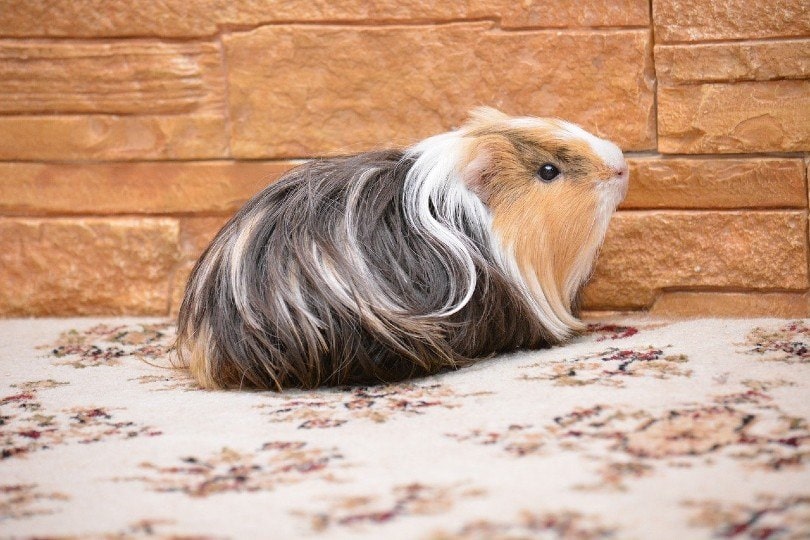
14. They Do Great in Groups
Guinea pigs are often adopted by themselves, but they do best when kept in groups. They are incredibly social creatures. Females often get along best together. They aren’t as territorial as males, so they usually don’t run into as many problems.
Males can get along quite well too. It depends mainly on their temperament. Some males don’t get along with each other. They need more space to live happily alongside each other, and no females must be present.
Often, guinea pigs learn to recognize other guinea pigs that they have bonded with. They make friends, in other words. Studies have shown that guinea pigs have lower stress levels when kept with a guinea pig that they know.
However, this has to be a bonded female – not a random guinea pig. The same stress relief does not apply if the guinea pigs are not bonded together.
It is even illegal to keep a guinea pig by themselves in some areas – such as Switzerland. In fact, in these areas, “rent a guinea pig” services are pretty popular. They’re primarily used to temporarily replace a guinea pig that has passed away so that their tank mate always has a companion.
If you plan on adopting one of these rodents, we recommend adopting more than one. Two is often a good number, but consider what will happen when one of the animals passes away. Three may be a better solution if you have the room and the time!
15. Poor Diets Can be Extremely Serious
Sadly, many guinea pig owners do not do the proper research on their pet’s diet. This leads to dietary problems – typically obesity or certain nutrition deficiencies.
For instance, guinea pigs need vitamin C, unlike many other animals. They cannot synthesize it themselves like most other mammals. Therefore, they need at least 10 mg daily in their diet – more if they are pregnant or growing.
They must obtain this vitamin through fresh veggies and fruits. Dietary supplements and pellets may also be helpful in some situations.
A poor diet can lead to metastatic calcification, teeth problems, and muscular dystrophy. Many captive guinea pigs experience these problems due to improper education. They need a particular diet containing mostly hay with a few carefully chosen veggies.
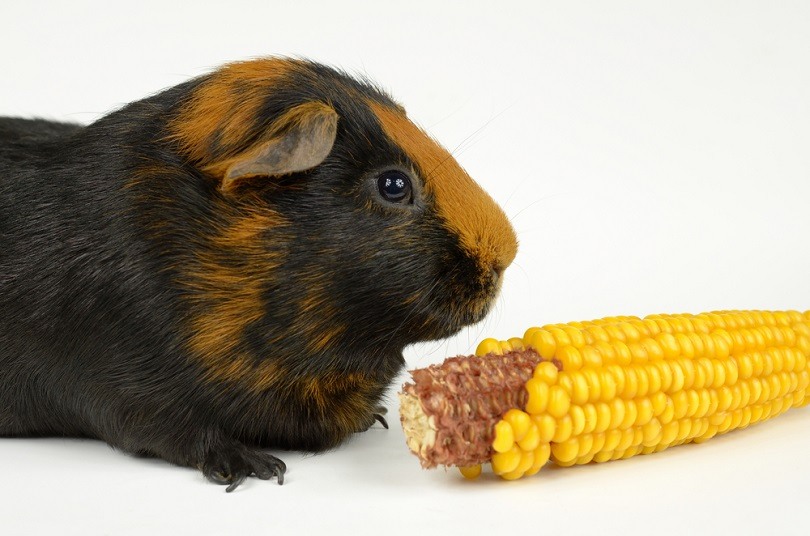
16. They Can Become Pregnant Before They Are Adults
Guinea pigs can become fertile at around 4 weeks of age – far before they are full-grown. This is true for both genders, though females sometimes put off their sexual maturity for a few more weeks.
Both males and females can breed year-round.
An early pregnancy may put extra strain on their body, which can lead to growth issues.
We recommend not getting your guinea pig pregnant before they are done growing. You preferably shouldn’t keep males and females together unless you plan on breeding them.
17. Pregnant Sows Look Like Eggplants
Pregnant guinea pigs have a precise eggplant shape. Of course, this won’t develop until a few days into their pregnancy, when they begin gaining weight.
Their pregnancy only lasts between 59 to 72 days. Therefore, they will start gaining weight quite quickly. Their exact size can also depend on their diet and the size of the litter. The more pups a sow is carrying, the more eggplant-shaped she will become.

18. Sows Only Have Two Nipples – But as Many as Six Pups
Unlike most mammals, females only have two nipples. This is far fewer than the number of pups they will have, which is regularly up to six in a litter. Luckily, guinea pigs seem to efficiently deal with this slight problem, raising pups to adulthood with little difficulty.
Larger litters are typically considered better. Smaller litters tend to have larger pups, which may cause birthing difficulties. Around three pups is the average for most litters. Preferably, your sow should have somewhere around that number of pups.
However, it is impossible to play a significant role in the number of pups your guinea pig ends up having. Much of it is genetics, but luck also plays a substantial role.
19. Sows Will Take Care of Each Other’s Pups
Bonded sows often share parenting duties with other sows. All lactating sows will feed the pups, though non-lactating sows usually don’t show massive interest in the pups – and may occasionally be aggressive. It isn’t typically recommended to keep non-lactating and lactating females together.
If you have two females that are bonded, breed them both at the same time for maximum success.
Sows regularly adopt the pups of another. This happens when the original mother dies or is unable to care for the pups for another reason.
Most sows are excellent mothers, but some younger ones may be unfit for parenting duties. The stress of pregnancy and birth at a young age can make them abandon their pups.
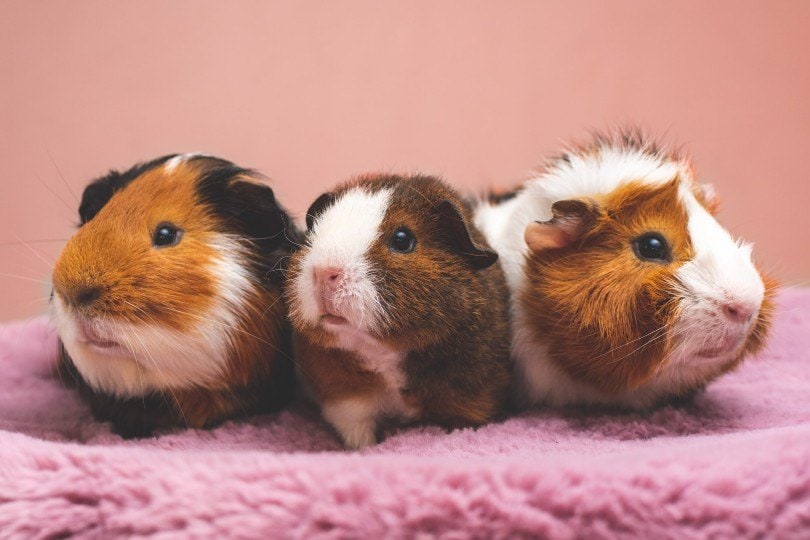
20. Guinea Pigs Prefer the Cold Over Heat
Due to their small, compact size and high amounts of fur, they can withstand cold temperatures better than hot temperatures. As we previously stated, they also don’t sweat. As you might imagine, this significantly reduces their ability to cope with higher temperatures.
Their ideal temperature is around that of a human, luckily – between 65 and 75 degrees. Even a temperature above 90 degrees for an extended period can lead to hypothermia. Pregnant and sick animals are more at risk of hot weather.
They are also not capable of dealing with sudden temperature changes. Usually, these temperature changes are caused by sudden drafts and humidity changes.
You want to keep your guinea pig away from drafts and in an area with consistent temperatures. Do not place their cage in direct sunlight.
21. They Mask Their Illnesses
As prey animals, guinea pigs evolved to mask any potential health problems. Often, it is difficult to tell when something is wrong with them until they become severely sick.
Sudden death isn’t uncommon, though an underlying illness usually causes it. For the guinea pig, it wasn’t sudden at all.
 Final Thoughts
Final Thoughts
Guinea pigs are fascinating creatures. They have many fascinating facts – some of which may directly impact the care they receive in captivity.
For instance, their ability to mask their illness means that pet parents should visit the vet as soon as they notice anything weird.
We highly recommend learning as much as possible about these exciting creatures before you decide to adopt one. They are often a bit more challenging to raise than many people realize. They require a specific diet, regular exercise, and plenty of cleaning. They aren’t the cleanest animals, though they do an excellent job of cleaning themselves.
Proper care can help your guinea pig live a long and fruitful life.
- You might be interested: Why Is My Guinea Pig Sneezing? Is It Normal? (Vet Answer)
Featured Image Credit: Naomi Marcin, Shutterstock







